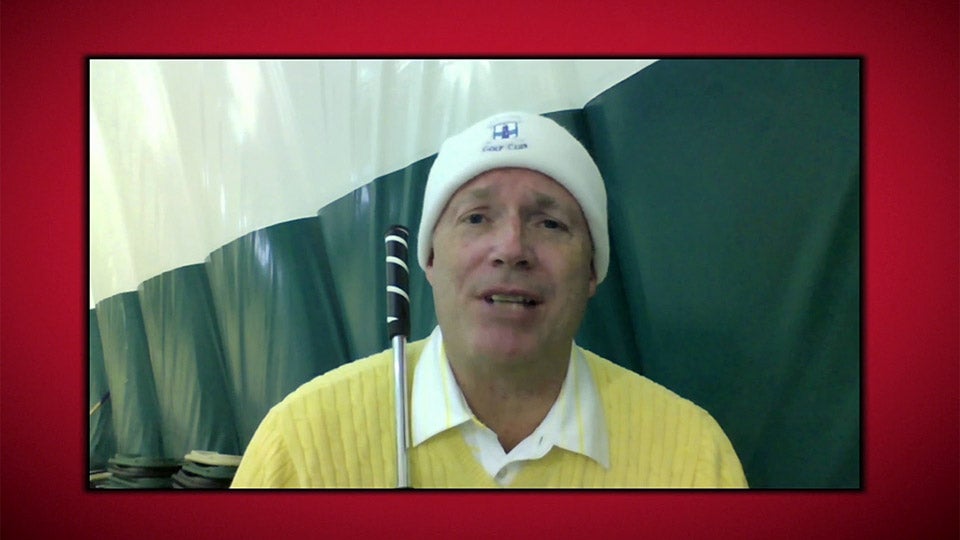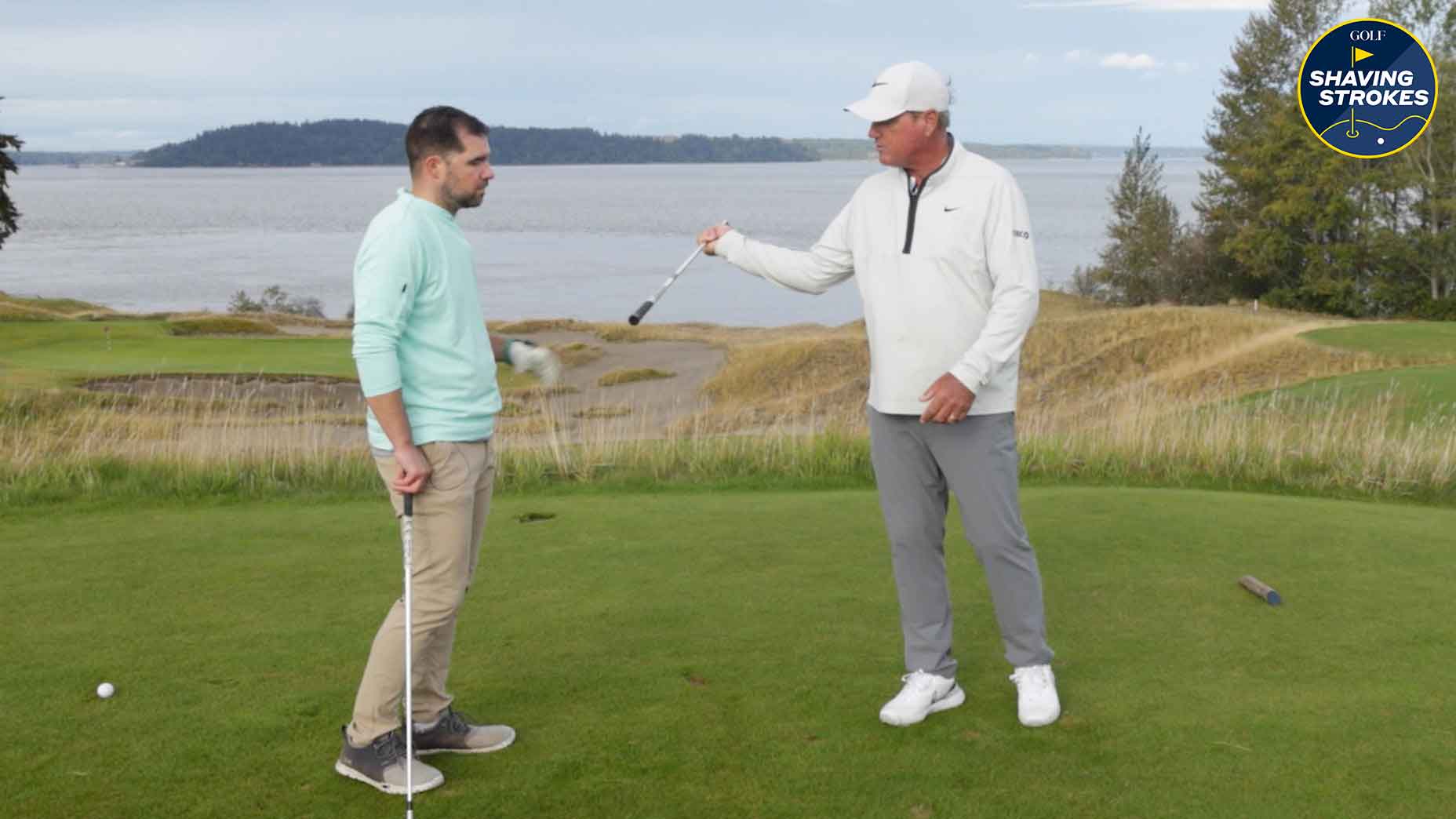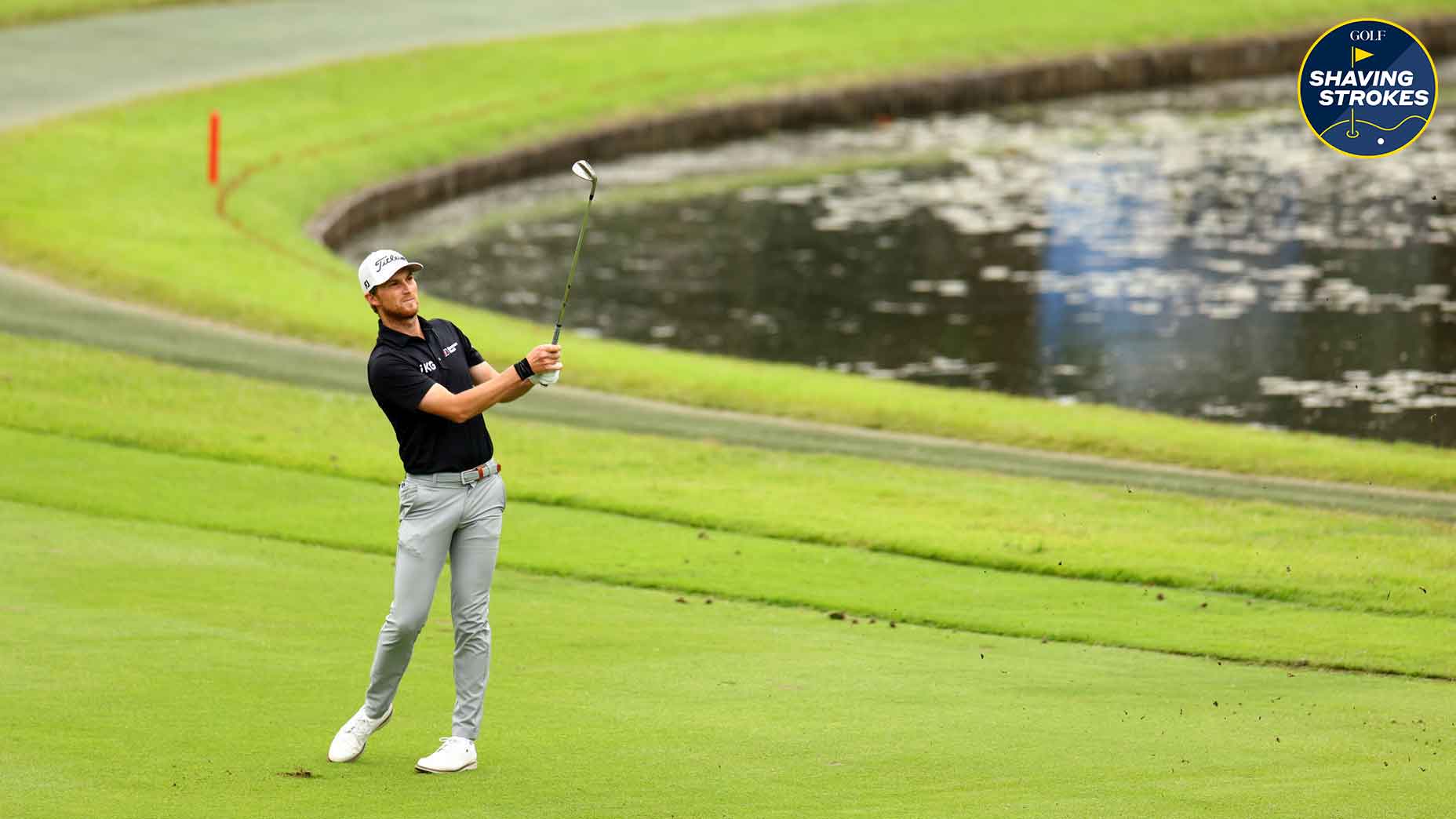ORLANDO, FLA. — There are three things you should know about sidesaddle putting, which today’s experts prefer to call face-on putting (because you face the target at address).
One. It may be a better way to putt. More on that in a minute.
Two. Putting croquet style is illegal UNLESS you’re off the putting surface. From the fringe, you are allowed to straddle the ball and put croquet style, like ol’ Sam Snead did briefly before it was banned and trust me, croquet-style putting is scary-easy.
Three. Two putters in the bag may be a good option. Face-on putting is easier from inside 20 feet once you get the hang of it, and since it is more difficult from longer distances at first, why not carry two putters? Use face-on when you’re going for the hole-out, go back to your regular putter when you’re lagging the long ones. So you take a 4-iron or a 5-wood out of the bag that you use once every three rounds, big deal.
The ban on anchored putting is less than nine months away. Some players who switched from long putters or belly putters have been successful so far by going back to conventional length putters. The idea that the ban isn’t going to be a big deal, as I read in one recent golf story, is wrong.
There were stories from Doral about how well Adam Scott rolled it using a conventional putter and a claw grip. At the Valspar Championship, Scott putted poorly, ranked 139th in the field in strokes gained putting and ended his streak of 45 consecutive cuts made.
I’m sure some pros will make the adjustment to conventional putting smoothly, but I also think it will be a small number. More players will struggle than excel, in my opinion, and some will eventually discover face-on.
Meanwhile, I’ve come down with the face-on putting virus ever since I wrote comprehensive piece on it in January for Sports Illustrated.
I wasn’t desperately looking for a new way to putt. I’ve been using a claw grip for eight years, and it was my better-than-usual putting performance that got me into the U.S. Senior Amateur Championship last year, when I was medalist and earned the only qualifying spot in a field of about 30 players.
I am considering switching to face-on putting because I think it may be better. With minimal practice, since there was still snow on the ground back home in Pittsburgh when I left, I’m already fairly confident on putts from six feet and in. Step One in face-on putting is to get the right putter. You need one that’s upright and center-shafted. USGA rules require at least a 10-degree shaft bend. There aren’t many face-on putter-makers out there. I can recommend two. There’s one sold by David Cook, who wrote the novel-turned-movie, “Seven Days In Utopia,” and was a prime subject in my SI story. It is available from www.davidcookphd.com.
The other is the Juan Putt putter, invented by Speed Stik creator Juan Elizondo. His putter is available at www.juanputt.com. (The Speed Stik is a popular training device designed to help build clubhead speed.)
While in Florida to cover the Honda Classic, I met with Juan Putt expert Steve McDonald, a savvy vet who has played competitively, caddied, taught and worked as a tournament official, among other things. McDonald supplied me with a 40-inch Juan Putt model that has a split grip. Its head is heavy, about 550 grams but you can lighten the weight by ten percent by removing two inserts. McDonald schooled me in how to take a stance and figure out what grip works best for me. Like conventional putting, face-on putting can be accomplished with a variety of set-ups.
Here’s how I do it: First, I stand at arm’s-length behind the ball, lining the putter head up on the target line while the head rests on the green. Once the club is aligned, I step in next to the ball, my right foot forward with most of my weight on it, my left out to the side and behind for balance. I bend over a little bit. My left hand is out in front of me, with my left thumb atop the end of the club. It’s the anchor that doesn’t move. My left elbow is jammed into my side. I take my normal claw grip with my right hand but position it lower on the shaft than normal. To keep from letting the face shut slightly and pull putts, I turn my right hand a little to the left so my second and third knuckles are on top of the shaft facing the target. In effect, I am now pulling the putter with my right arm more than I am pushing it. For me, that’s the genius part of the stroke.
After that, all I do is look at the hole with both eyes, look back down at the ball and swing my right arm along the target line.
My face-on putting session with McDonald lasted about 90 minutes. It helped speed my development that I’d already learned the fundamentals from Cook last December on a practice green in Waco, Texas, when I was researching that SI story. You can check out my face-on form at the top of the page in a video I shot last week for our weekly digital magazine, SI Golf+.
The most interesting part of our session was when McDonald demonstrated his straddle-the-ball method from off the green. I had no idea that was legal. A few days after our session, I contacted the USGA even though I was sure that if anyone knew the rule, it would be Elizondo and the face-on putter guys. The USGA Rules Department’s response: “The Rule that prohibits standing astride your line is Rule 16-1e and is limited to the putting green. There is no similar prohibition for a stroke made from off the putting green. Therefore… yes, a player can putt croquet style for a stroke made from off the putting green.” This doesn’t sound like a big deal until you try it. Maybe it’s the Juan Putt’s monster-heavy head that drives the ball through the fringe and even short rough, but this option is really efficient. Swinging the putter as you straddle the ball makes it very difficult to hit a shot off-line, unlike chipping. Even I was good at it right away, so how hard can it be?
You may still think face-on putting belongs back in left field where it came from and will never amount to anything. That could be. I’m pretty sure it will make an appearance on the PGA Tour later this year, however, and definitely in early 2016. All it will take is one good putting performance on TV by a face-on putter and it will be a hot new trend. You read it here first.
Watching McDonald play would erase your doubts. He putts face-on and puts a sweet roll on the ball. Do not put him for money. He is an assassin. McDonald hunches over at the waist and grips the putter very low on the shaft, following the Juan Putt’s slogan, Get Low to Go Low. It’s the same approach originally used by Snead, whose right hand was less than a foot above the putter head when he putted sidesaddle.
There is potential in this method, regardless of how untraditional it looks. So I’m going to look into it. Check back in a month or two. As a certain famous golfer says, I need more reps. Lots of them, probably.
For more news that golfers everywhere are talking about, follow @si_golf on Twitter, like us on Facebook, and subscribe to our YouTube video channel.
[bc_video video_id=”4049167909001″ account_id=”416418725″ player_id=”B1yPalzMx” embed=”in-page” padding_top=”56%” autoplay=”” min_width=”0px” max_width=”640px” width=”100%” height=”100%”]







